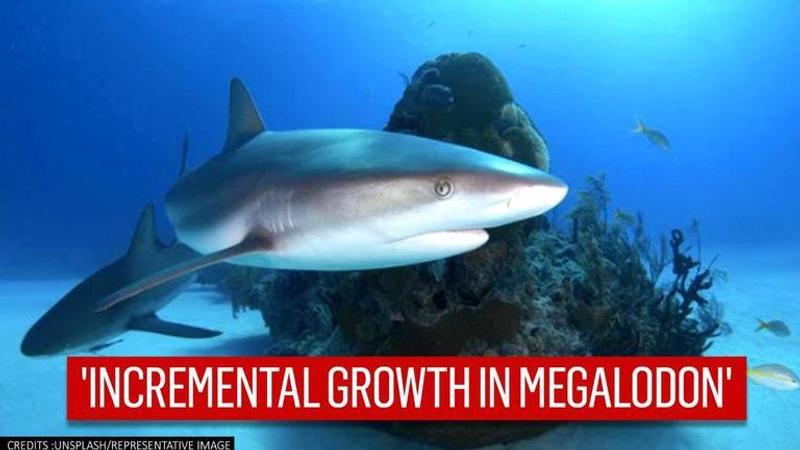Published 17:25 IST, January 11th 2021
Megalodon babies grew bigger than adult humans by eating unhatched eggs in womb: Study
Scientists at DePaul University in Chicago examined an Otodus megalodon fossil that was recovered in the 1860s from 15-million-year-old rock.

New research found that Megalodon or megatooth sharks gave birth to gigantic babies that outsized an adult human as it fed the unhatched eggs in the uterus to survive. Megalodons, the deadliest marine predators gave birth to cannibal babies that were about 6ft 7in (2m) at the time of birth. In the study published in the international journal Historical Biology, Megalodon that featured in Hollywood’s sci-fi thriller "The Meg", belonged to a group called lamniform, the cartilaginous fishes are mostly known for their teeth. However, the new research revealed that their infants were born humungous, up to 2 meters at birth, contrary to the size estimated earlier based on evidence from its teeth that was used to estimate body size.
[Identified annual growth bands in a vertebra of the extinct shark Otodus megalodon, along with hypothetical silhouettes of the shark at birth and death, each compared with the size of a typical adult human. Image credit: DePaul University]
Scientists at DePaul University in Chicago examined an Otodus megalodon fossil that was recovered in the 1860s from 15-million-year-old rock, now preserved at the Royal Belgian Institute of Natural Sciences. Firstly, the lead researcher Kenshu Shimada studied the shark’s vertebrae and its annual growth rings, which determined the fish’s growth brands. It was found that the megalodon specimen belonged to species that died approximately 46 years old. Paleobiologist at DePaul University, Shimada said: “As one of the largest carnivores that ever existed on Earth, deciphering such growth parameters of megalodon is critical to understand the role large carnivores play in the context of the evolution of marine ecosystems".
[Paleobiologist at DePaul University with Megalodon tooth. Credit: DePaul University]
Intrauterine cannibalism
Megalodon’s size at birth was about 2 meters in total, which indicates that it must have given live birth as all present-day lamniform sharks do,” Shimada said in the study. He added all previous research only focused on Megalodon’s tooth as it part of a shark’s fossilise. The predator’s skeleton is made of cartilage and not bone. “The large birth size of O. megalodon suggests that the young sharks, like many present-day sharks, ate unhatched eggs in the uterus to survive – a phenomenon called intrauterine cannibalism,” the study concluded. The large size of the pups at birth gave the predatory infants [them] an advantage as already large predators.
Updated 17:26 IST, January 11th 2021





